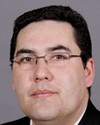Thank you, Mr. Chairman.
Over the last few months we've had a lot of discussion on employability, which is what we're studying. One thing that strikes me as a common thread is that we are, of course, going to be facing a major labour shortage. The Canadian Teachers' Federation, which didn't appear as a witness, is talking about 50% of their teachers being eligible to retire in the next five years. For nurses, I think you said, it will be 40% or 50% fairly soon.
To me, one of the problems we've had, or the biggest barrier--and you've referred to this, Ms. Silas--is the stovepiping of departments, the not talking to each other horizontally. Then you have the added barrier of provincial and federal.
It would seem to me that we are at a crisis point here, and I think that's what we've heard. Seniors, foreign workers, aboriginal people, women, and recognizing the abilities of those who are disabled to increase their participation in the workforce--these are all things we need to address.
We were talking about the summer student program. This program, if properly designed, is definitely one tool. Whether it's private or public--and yes, maybe some of the private can afford to do some on their own--something needs to be done, because the shortages are everywhere.
My question in that context--and this is a very loaded question--is this: if you had a top wish list of one or two priorities that you'd like to see to increase the labour force in your particular area or profession, what would it be?
I'll ask Mr. Davis or Ms. Silas, for starters.


